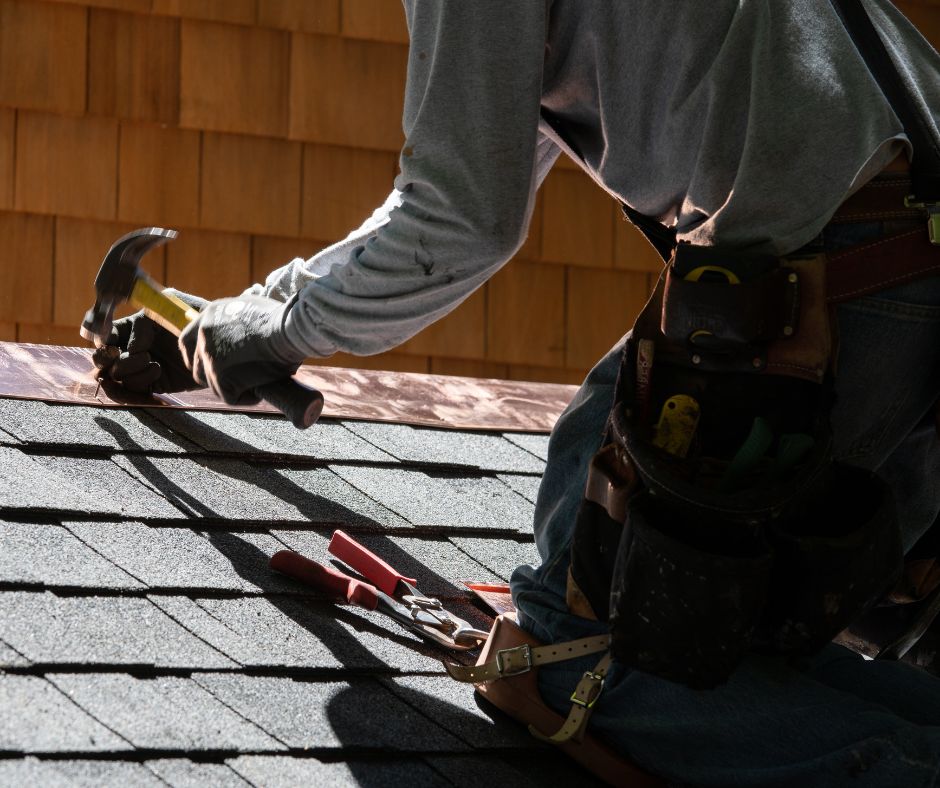When choosing the proper underlayment for a roofing project, the decision between felt and synthetic options can be perplexing. Both materials have merits and drawbacks, and understanding the key differences is essential for making an informed choice. Each aspect deserves careful consideration, from composition and water resistance to durability and installation process. In this discussion, we will explore the factors that set felt and synthetic underlayment apart, providing a comprehensive analysis to help you make the best decision for your roofing needs. Whether you’re a roofing professional or a homeowner embarking on a renovation project, the insights shared here will shed light on the complexities of this choice and guide you toward a well-informed decision.
Composition and Materials
The composition and materials of felt and synthetic underlayment are critical in determining their performance and suitability for roofing applications. Felt underlayment is typically made from organic materials such as cellulose fibers, recycled paper, or fiberglass. This composition gives it certain advantages, including good water resistance and durability. However, felt underlayment is prone to tearing and can be challenging to install due to its weight and flexibility. On the other hand, synthetic underlayment is made from materials like polypropylene or polyester. This composition provides synthetic underlayment with several benefits, including superior tear resistance, lightweight, and ease of installation. However, synthetic underlayment may not offer the same level of water resistance as felt. Overall, the performance comparison between felt and synthetic underlayment depends on the specific roofing application and the desired characteristics.
Water Resistance and Moisture Management
Considering the importance of water resistance and moisture management in roofing applications, the performance of felt and synthetic underlayment in this aspect is crucial to evaluate. Here are three key factors to consider:
- Mold prevention: Moisture trapped in the roofing system can lead to mold growth, compromising the structure’s integrity and pose health risks. Synthetic underlayment is often more effective at preventing mold growth due to its superior water resistance properties.
- Vapor barrier: Proper moisture management requires a reliable vapor barrier to prevent moisture from penetrating the roofing system. Synthetic underlayment typically offers a better vapor barrier than traditional felt, reducing the risk of moisture-related issues such as rot and decay.
- Durability: Water resistance and moisture management are closely linked to the overall durability of the underlayment. Synthetic underlayment, more resistant to water and moisture, tends to have a longer lifespan and better performance in challenging weather conditions than felt.
Durability and Longevity
Synthetic underlayment exhibits exceptional durability and longevity, making it a superior choice for roofing applications. Compared to traditional felt underlayment, synthetic underlayment offers a significantly longer lifespan. A durability comparison between the two materials reveals that synthetic underlayment is more resistant to tearing, puncturing, and UV degradation. This enhanced durability ensures that the underlayment can withstand the rigors of installation and provide long-lasting protection to the roof. Additionally, a lifespan analysis indicates that synthetic underlayment can last up to two or three times longer than felt underlayment. This extended lifespan reduces the need for frequent replacements and enhances the roofing system’s overall durability. Homeowners and contractors can ensure that their roofs are built to withstand the test of time by choosing synthetic underlayment.
Installation Process and Ease of Use
What factors contribute to the ease of installation and use of synthetic underlayment for roofing applications? Several key factors contribute to its ease of use and installation techniques when installing synthetic underlayment. Here are three critical considerations:
- Lightweight and Flexible: Synthetic underlayment is typically lighter and more flexible than traditional felt. This makes it easier to handle and maneuver during the installation process, reducing the strain on the installer.
- Easy Cutting and Fastening: Synthetic underlayment is designed to cut and fasten easily. It often comes with pre-printed lines or grids to assist with accurate cutting, allowing for precise installation. Many synthetic underlayment products also have adhesive strips or pre-drilled nail holes, simplifying the fastening process.
- Minimal Maintenance Requirements: Synthetic underlayment is known for its durability and resistance to weathering. As a result, it generally requires less maintenance than felt underlayment. This can save time and effort for both installers and homeowners, making it a convenient choice for roofing applications.
Cost and Affordability
Synthetic underlayment’s price and affordability are essential when compared to other roofing underlayment options. While synthetic underlayment may have a higher upfront cost than traditional felt underlayment, it offers long-term cost-effectiveness due to its durability and longevity. Synthetic underlayment is designed to withstand harsh weather conditions, reducing the need for frequent repairs or replacements. This can result in significant cost savings over time. Additionally, synthetic underlayment is known for its eco-friendly options. Many synthetic underlayment products are made from recycled materials, reducing waste and promoting sustainability. These eco-friendly options benefit the environment and contribute to the overall cost-effectiveness of synthetic underlayment.
